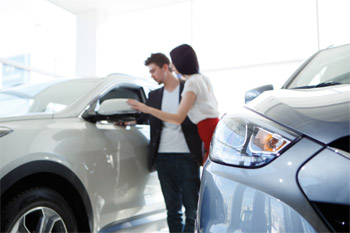Try Before You Buy - Test Driving . All You Need To Know

Try Before You Buy - Test Driving – All You Need To Know
So, you have your heart set on a car, you're at the dealership or with the seller and you're ready to test drive. But what should you do when you're out there on the road? What should you look for? This handy guide will show you all the tips and insights into how a test drive can help you decide if the car is not only right for you, but also isn't hiding anything nasty!
First, ask the right questions
If you are looking at buying a used car, asking questions is only the tip of the iceberg. Even so, asking the right questions will save you from buying a "lemon" in the first instance. If you're buying used, you should always ask:
• How many kilometres does it have on the odometer?
• If it's a used car, ask how many owners has this car had?
• Has the car been damaged in any way?
• Are all the parts still original manufacturer parts? If not, why not?
• Does the car's internals have any problems, such as the wiring or fuses?
• Is the car still registered?
• Why are you selling this car?
• What is the towing capacity (if you need it)?
• Show me the roadworthy certificate, log books and registration papers.
If you're buying new, you should head straight to the test drive.
Do a visual inspection
This might take some time, but it is worth it. You should look the car over for dings, bumps, flood damage and obvious body repair. Look for build-ups of engine oil or rust. If you're not sure what you're looking for, you can arrange an independent inspection from one of your state or territory automotive associations.
During this time, you need to note down the Vehicle Identification Number so you may look it up on the Personal Property Securities Register. This makes sure you aren't buying a write-off or a stolen car.
Head inside the car
• If the seats are comfortable enough for your primary style of driving, i.e., if you use the car for long commutes
• Can you adjust the seats?
• If passengers can easily enter and exit the car; if it's a car with more than two rows, if people/kids in the back can exit without fuss
• Whether the controls, infotainment system (satellite navigation etc.) and gearstick are within easy reach
• If the car has enough storage space; extra pockets, cup holders, etc.
• If it's a convertible, check how easy or how long it takes to raise and lower the roof
If it passes all of these tests, then you should take the car for a spin.
Ask for the test-drive
Some of us think a test drive is a quick -round the block trip just to get a 'feel" for the car. Buyers have more power to shop around, so you can insist on trying out the car at a time and locale that suits you. You may have to press dealers to take the car for a day or two, but this should allow you ample time to be acquainted with the car. If your dealer won't let you take it out by yourself, be prepared to walk away.
If you're buying used, a private seller might be reluctant to give his or her car to you for a long period of time – which is fair enough! So sometimes, a lap or two around the block will have to do.
Once you have the car for a day or more, you should test all the different conditions you might find yourself.
For example, find a low-traffic industrial area or private lot. This will give you opportunities to test how well it handles through tight corners and sudden breaking situations. You should also find a nearby highway to find out how sturdy the car is in higher speed trips over 80km/h. This will give you an impression on how well the car merges with traffic – does it struggle or does it make light work of acceleration?
You should also let the car idle, to hear if the engine rattles or starts to peter out. Check if the tachometer (RPM meter) dips or fluctuates, even when standing still. This could indicate poor engine condition.
You – and your usual passengers such as your kids - should also note if the seating is comfortable during longer rides. Also ask: is the cabin quiet, or can you hear external road noise/rumble?
At this point, you should test the climate control or air conditioning to see if it responds well. You should also note down how well the drivers' visibility and ride comfort is. Can you make lane changes using only your mirrors? If equipped, does the lane change warnings work as intended?
Currently, you should be able to have enough room to keep your iPod or smartphone within reach, connected to the stereo system and be able to charge it. If it's fiddly or awkward to keep your devices charged and connected to the stereo via AUX cable or Bluetooth, you'll know quite quickly!
Last of all, you should think back to your 'P" plate test and park the car in a variety of situations. Parallel parking, point to point, 3-point turns, angle parking and backing into your own driveway. Figure out the degree of difficulty – it can be a deal breaker for some!
Once you've 'tallied" the score of what you like and don't like, you should be able to make a good decision on whether the car is right for you!
MORE





